By Dan Weisz
I know of two mid-town Great Horned Owl nests and visit them every few days. Each nest has three owlets and one family is a few weeks ahead of the other as far as growth and development of the young. The birds in the photos below are from one of the nests. I imagine that these owlets are about 7-8 weeks old. They fledged, or left the nest, about two weeks ago, and spend most of their day perched very high in a tree adjacent to their nest tree.
One of the Great Horned Owlets looking down on me
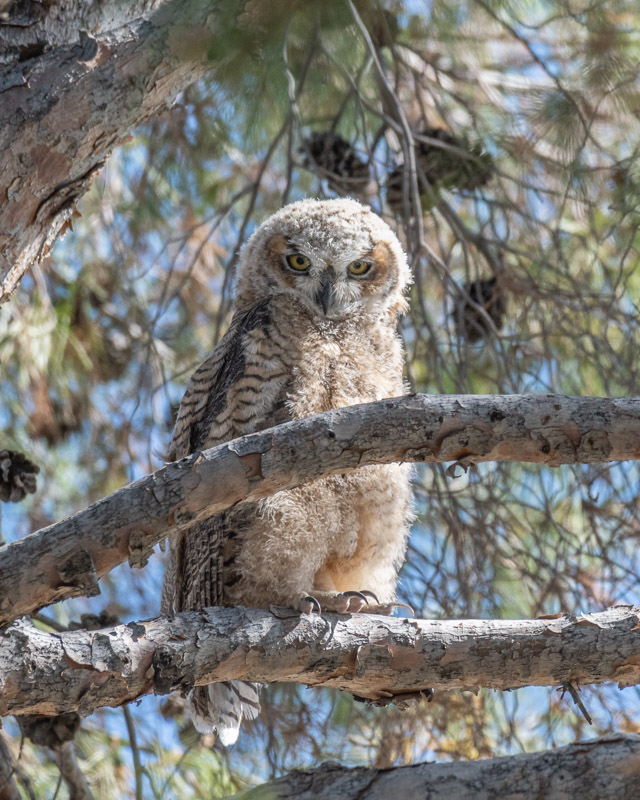
And then a person with a dog came around the corner:
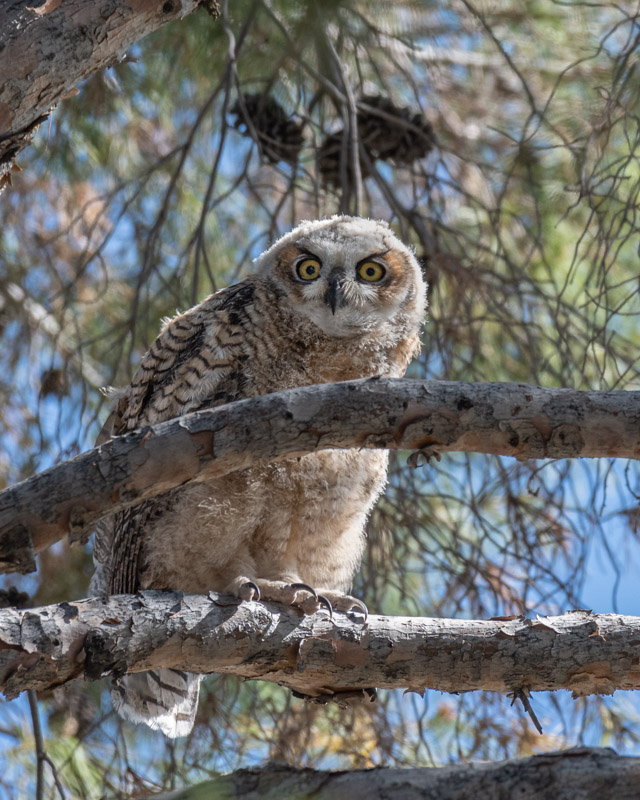
And the dog has the owlet’s full attention
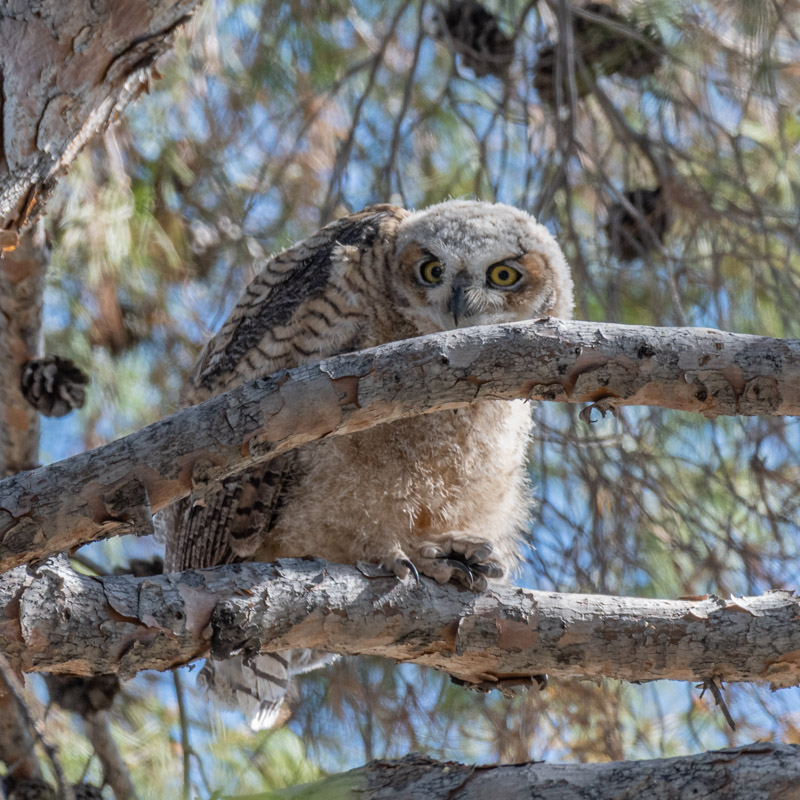
Mom alternated between sleep and some kind of wakefulness. The female is the adult present around the nest and the fledglings. Dad is somewhere nearby within earshot if not sight. But Mom is the one in the tree with the youngsters. The feathers sticking up from her head are the features that give this species their name: Great Horned Owl. They aren’t horns and although some people call them ear tufts, they have nothing to do with the owl’s ears or hearing.
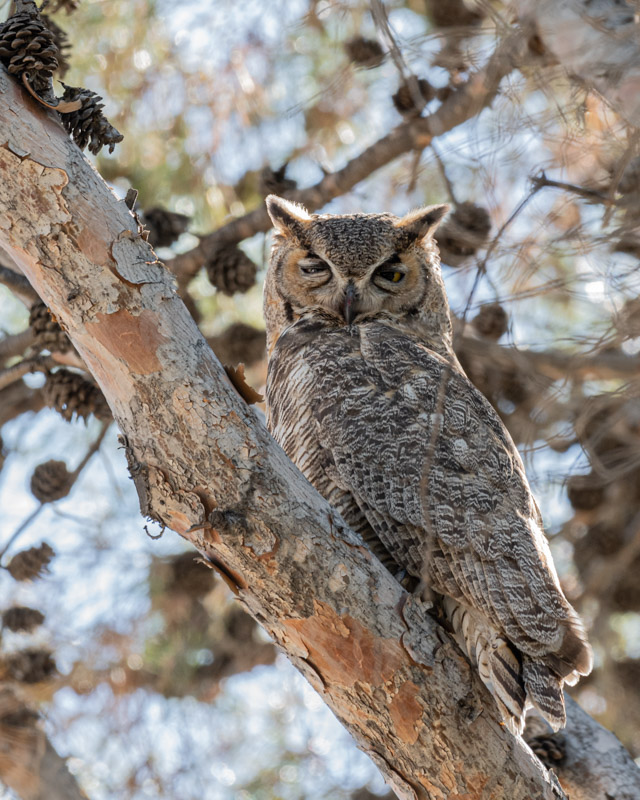
You can see a hint of those ear tufts on this Owlet. The owl’s facial disc is becoming more pronounced. The feathers forming the black “parenthesis” around the face mark the bird’s facial disc. Those feathers and the ones inside of them help to move all sound to the owl’s ears which are located below and a bit behind the eyes.
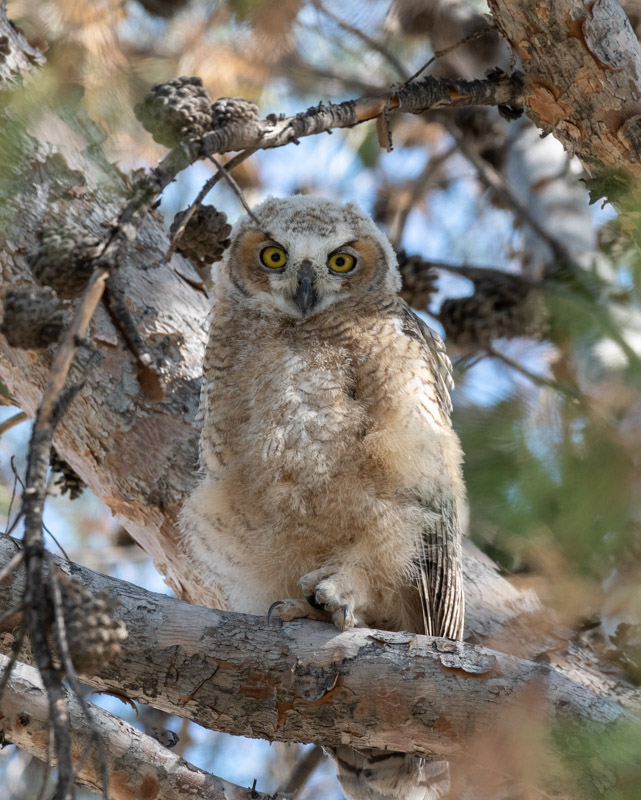
And, again, a dog came walking up the sidewalk, getting the bird’s full attention.
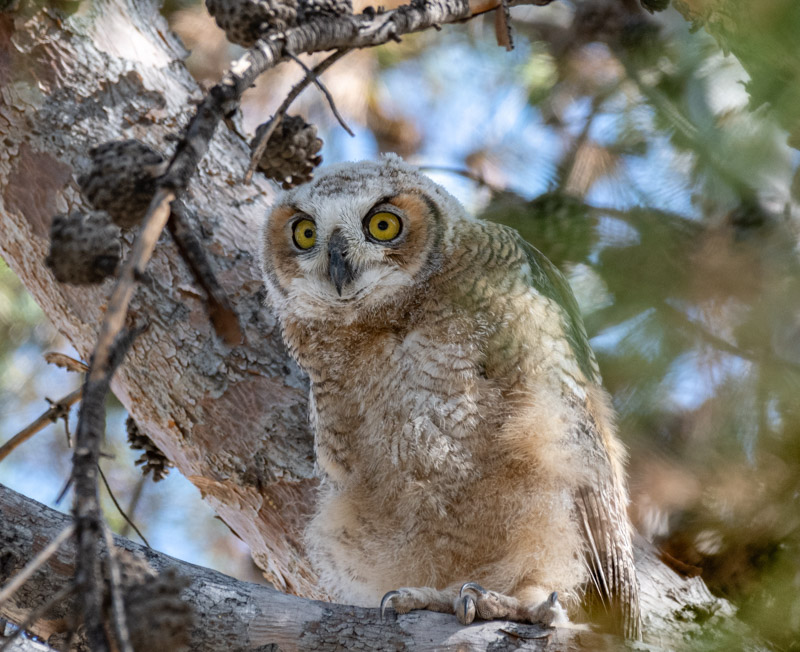
Here is a nice look at one young bird’s back and tail feathers. At this stage, the bird’s back and tail feathers have more distinct dark barring compared to an adult’s feathers.
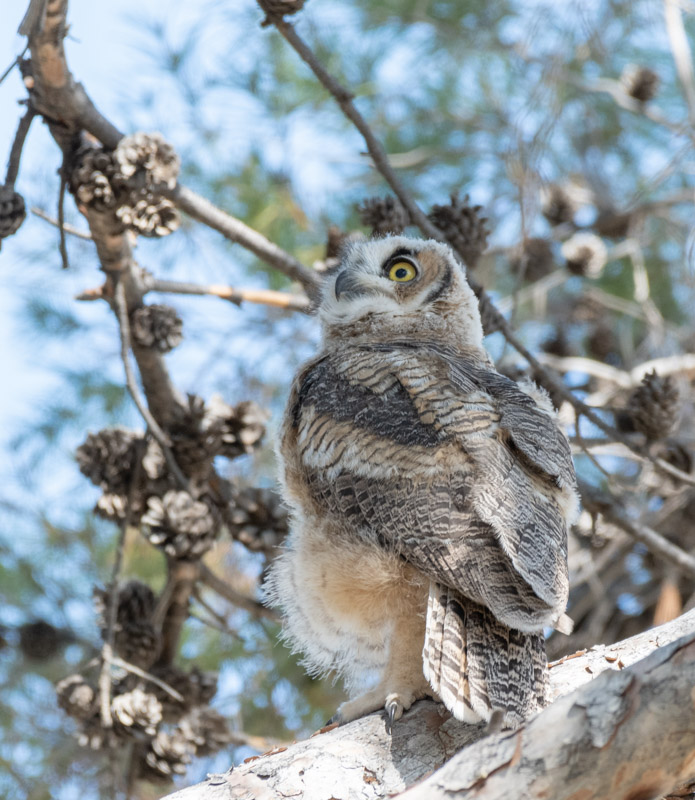
The shot below is at a strange angle, looking straight up at the female Great Horned Owl. You can clearly see the barred feathering of the mother’s breast feathers compared to the more downy feathers of any of the young in photos above this one. Aren’t those talons formidable looking? Another interesting feature of this bird is the distinct part in her breast feathers. As breeding season approaches, female birds will lose the feathers on their breasts resulting in what is called a “brood patch”. This bare skin enables the mother sitting on eggs to have direct skin-to-egg contact, allowing for more heat on the eggs. This also helps to keep her young hatchlings warm through the night and on cool spring days.
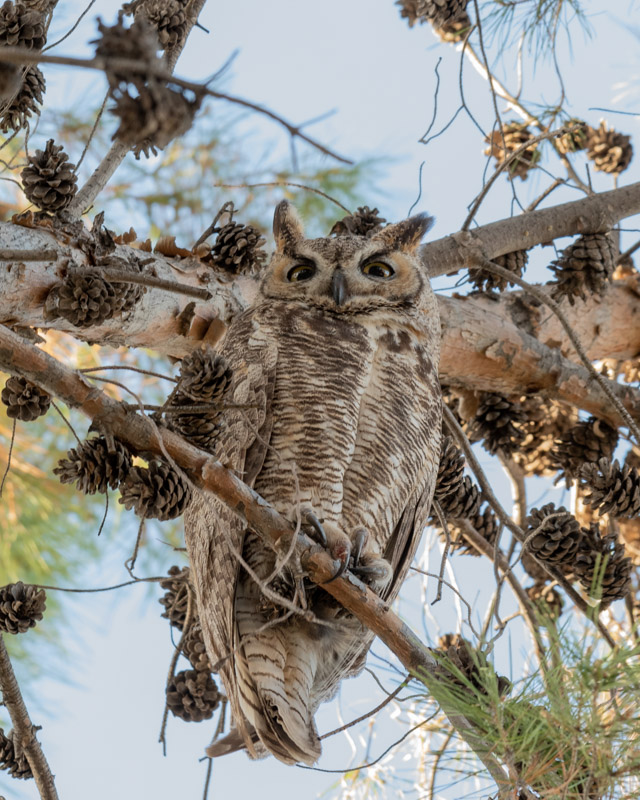
Lean on me! I like the two new barred feathers beginning to show on this owlet.
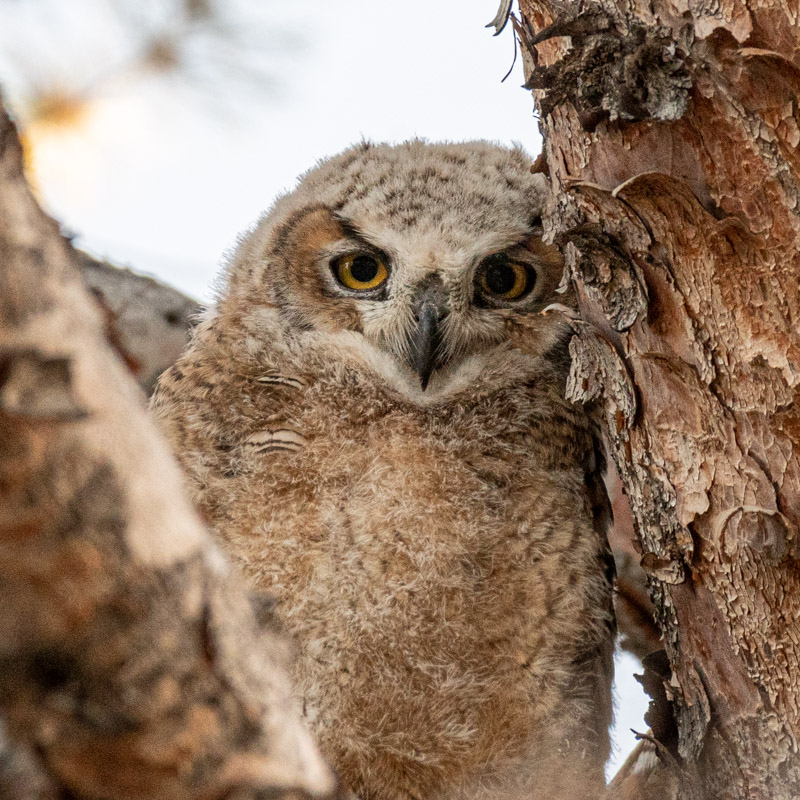
The inevitable “Hoo are you?” look.
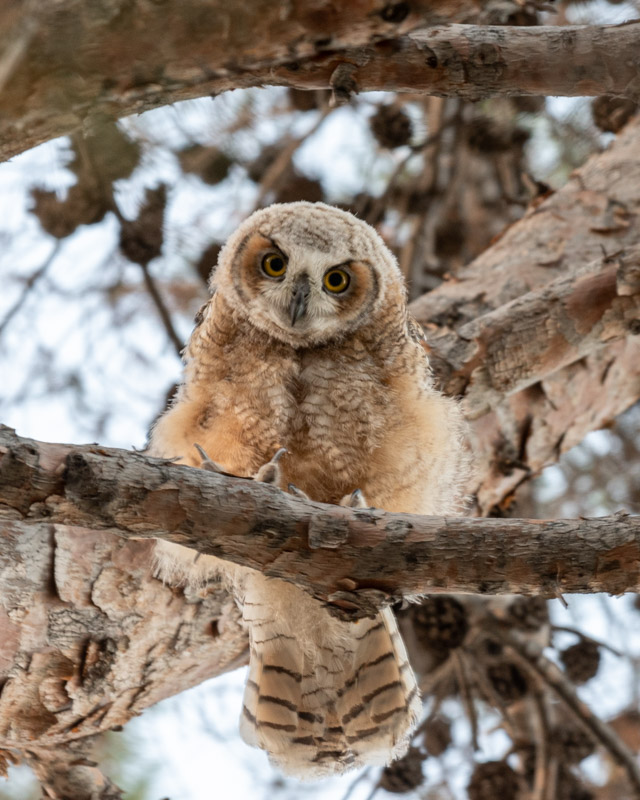
In this family group, two of the young birds often perch next to each other.
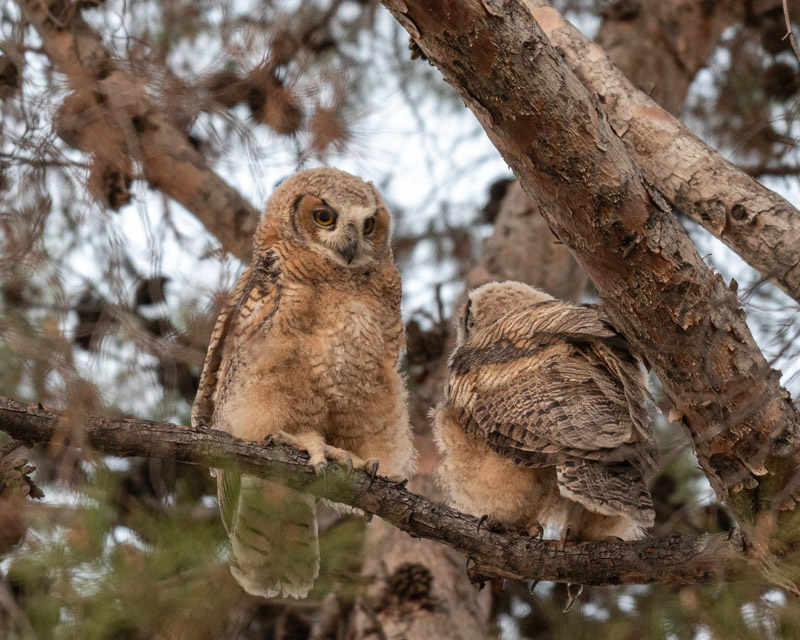
Look at this bird’s talons. Owls have four talons. They, like most birds, have three forward talons and one in the back. However, owl feet and talons are unique in that they can rotate their outer talon backwards giving them two forward and two trailing talons. This creates a much larger hand in order to grab their prey with. You can see that this owl has rotated its outer talons backwards in this photo.
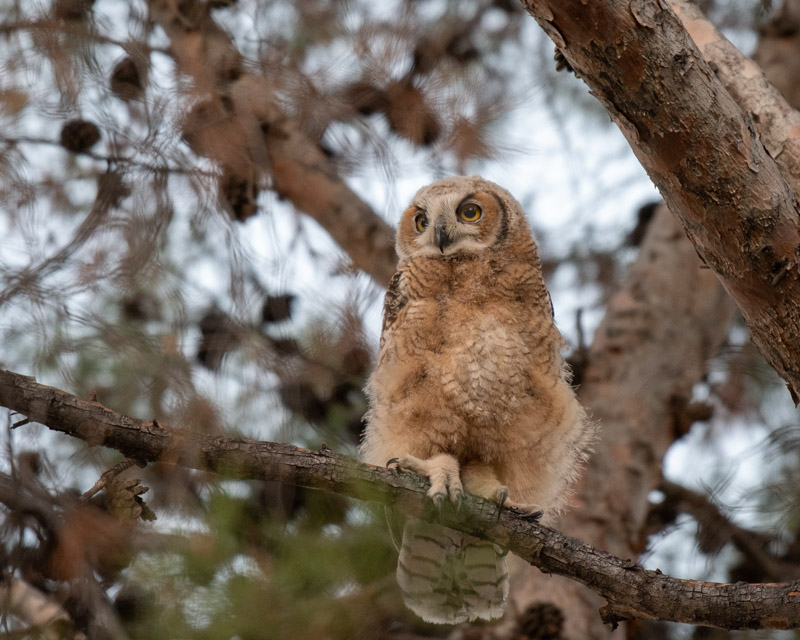
When I went to the second mid-town Great Horned Owl nest, I could not find the birds that morning. All I found was a clear sign that owls were in the tree, but they were too well hidden for me to find.
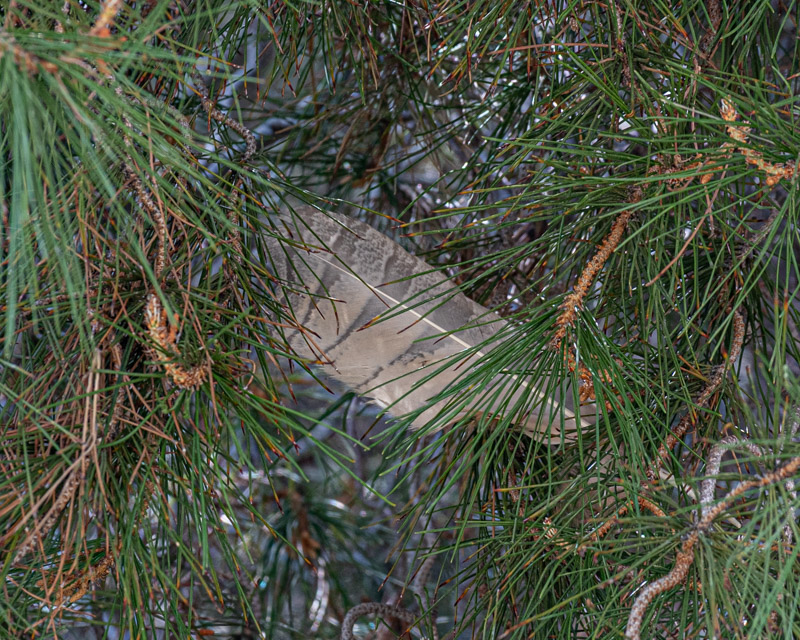
Definitely more owl photos to follow. But first, an update on the Vermilion Flycatcher nest and fledglings.
